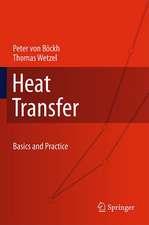Continuous Media with Microstructure
Editat de Bettina Albersen Limba Engleză Hardback – 26 feb 2010
| Toate formatele și edițiile | Preț | Express |
|---|---|---|
| Paperback (1) | 950.21 lei 43-57 zile | |
| Springer Berlin, Heidelberg – 7 oct 2014 | 950.21 lei 43-57 zile | |
| Hardback (1) | 955.25 lei 43-57 zile | |
| Springer Berlin, Heidelberg – 26 feb 2010 | 955.25 lei 43-57 zile |
Preț: 955.25 lei
Preț vechi: 1164.93 lei
-18% Nou
Puncte Express: 1433
Preț estimativ în valută:
182.79€ • 191.33$ • 152.14£
182.79€ • 191.33$ • 152.14£
Carte tipărită la comandă
Livrare economică 31 martie-14 aprilie
Preluare comenzi: 021 569.72.76
Specificații
ISBN-13: 9783642114441
ISBN-10: 364211444X
Pagini: 450
Ilustrații: XXII, 389 p.
Dimensiuni: 155 x 235 x 30 mm
Greutate: 0.73 kg
Ediția:2010
Editura: Springer Berlin, Heidelberg
Colecția Springer
Locul publicării:Berlin, Heidelberg, Germany
ISBN-10: 364211444X
Pagini: 450
Ilustrații: XXII, 389 p.
Dimensiuni: 155 x 235 x 30 mm
Greutate: 0.73 kg
Ediția:2010
Editura: Springer Berlin, Heidelberg
Colecția Springer
Locul publicării:Berlin, Heidelberg, Germany
Public țintă
ResearchCuprins
SCIENTIFIC LIFE OF PROF. DR. KRZYSZTOF WILMA?SKI.- Curriculum Vitae of Prof. Dr. K.Wilma?ski.- Publications of Prof. Dr. K. Wilma?ski.- THERMODYNAMIC MODELING.- On Pore Fluid Pressure and Effective Solid Stress in the Mixture Theory of Porous Media.- An Extrapolation of Thermodynamics to Evolutionary Genetics.- Some Recent Results on Multi-temperature Mixture of Fluids.- EXTENSIONS OF CONSTITUTIVE LAWS.- Hypocontinua.- On Constitutive Choices for Smectic Elastomers.- A Note on the Representation of Cosserat Rotation.- Material Uniformity and the Concept of the Stress Space.- Coupled Nonlinear Thermoelastic Equations for an Orthotropic Beam with Thermal and Viscous Dissipation.- On the Mathematical Modelling of Functionally Graded Composites with a Determistinic Microstructure.- MICRO- AND NANOSCALE MECHANICS.- On the Derivation of Biological Tissue Models from Kinetic Models of Multicellular Growing Systems.- Instabilites in Arch Shaped MEMS.- Towards Poroelasticity of Fractal Materials.- The Maxwell Problem (Mathematical Aspects).- Continuum-Molecular Modeling of Nanostructured Materials.- WAVES.- Linear Wave Propagation in Unsaturated Rocks and Soils.- Explicit Solution Formulas for the Acoustic Diffraction Problem with a Slit in a Hard and a Soft Screen.- On the Stability of the Inversion of Measured Seismic Wave Velocities to Estimate Porosity in Fluid-Saturated Porous Media.- On Two Insufficiently Exploited Conservation Laws in Continuum Mechanics: Canonical Momentum and Action.- Waves and Dislocations.- PHASE TRANSITIONS.- Liquid-Solid Phase Transitions in a Deformable Container.- Composite Beams with Embedded Shape Memory Alloy.- Microstructures in the Ti50Ni50???x Pd x Alloys’ Cubic-to-Orthorhombic Phase Transformation: A Proposed Energy Landscape.-GRANULAR MEDIA.- Analysis of Shear Banding with a Hypoplastic Constitutive Model for a Dry and Cohesionless Granular Material.- Principal Axes and Values of the Dispersion Coefficient in the 2D Axially Symmetric Porous Medium.- The Importance of Sand in Earth Sciences.
Textul de pe ultima copertă
The contributions to the book concern various aspects of extension of classical continuum models. These extensions are related to the appearance of microstructures both natural as well as these created by processes. To the first class belong various thermodynamic models of multicomponent systems such as porous materials, composites, materials with microscopic heterogeneities. To the second class belong primarily microstructures created by phase transformations. Invited authors cover both fields of thermodynamic modeling and mathematical analysis of such continua with microstructure. In particular the following subjects are covered:
- thermodynamic modeling of saturated and unsaturated porous and granular media,
- linear and nonlinear waves in such materials,
- extensions of constitutive laws by internal variables, higher gradients and nonequilibrium fields,
- stochastic processes in porous and fractal materials,
- thermodynamic modeling of composite materials,
- mathematical analysis of multicomponent systems,
- phase transformations in solids.
Caracteristici
Discusses the extension of classical continuum models In honor to Professor Wilmanski











